Bicycle touring is egalitarian and inclusive – you don’t need to be a cyclist or a gym hero to start travelling by bike. Plenty of people who never were into cycling managed to travel the world by bike. But some training is crucial to prepare for a bicycle tour, especially if you spend most of your day sitting. In the end, you want to have fun and not struggle with every kilometre. How to train for a bicycle tour to prevent injuries and get the most out of your journey?
There is no universal training for a bicycle tour
There is no universal way to prepare for a bicycle tour. Everybody has different strengths and weaknesses, and your current fitness level should dictate how you train for your trip.
If cycling has always been a part of your life and you’re regularly commuting or going on group rides, you just need to keep going and incorporate more strength and flexibility training.
If you’re a frequent guest at the gym or in a yoga studio, you might have to shift your focus towards cycling.
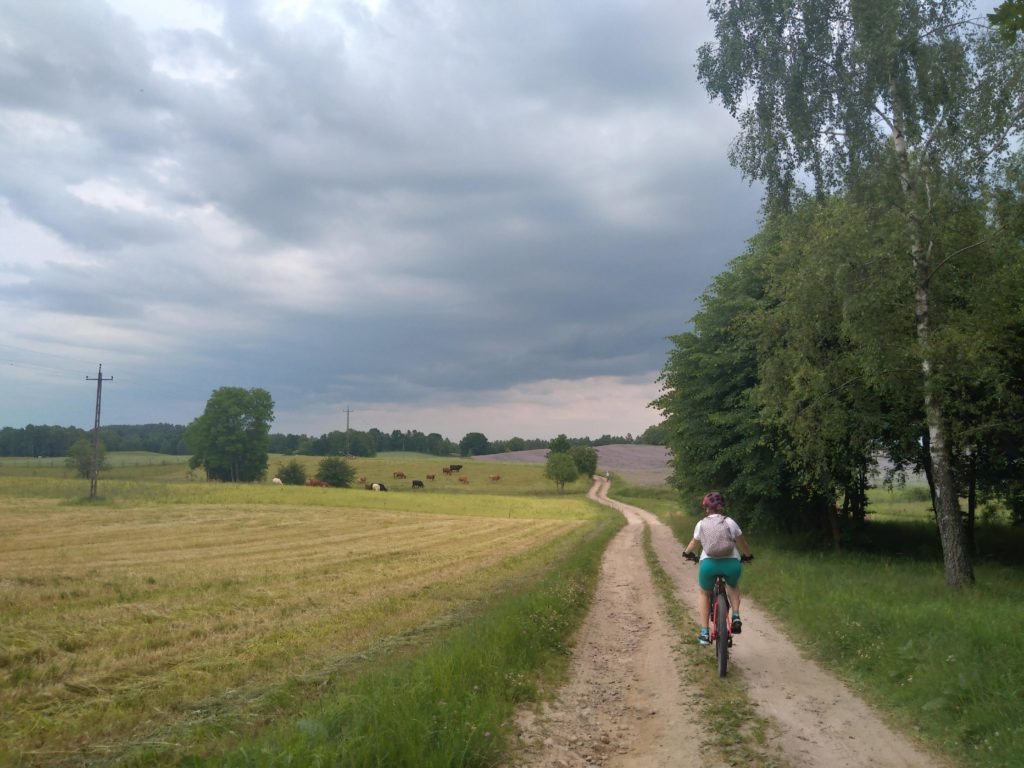
Are you a couch potato and work 8 hours in front of a computer? You’ll have to start implementing short bike rides and short full-body-strength sessions to get your body used to the activity. In this case, it might also be worth visiting a physiotherapist, especially if you frequently experience back pain or feel like your muscles are stiff and tense.
Training for a bicycle tour is a great way to get in shape and prepare for a fun and challenging physical activity. You have to build up your endurance and strength. This can be done through regular cycling and regular cardio and strength training.
How many weeks do you need to prepare for a bicycle tour?
If you’re not cycling regularly yet, start incorporating it into your daily life at least three months before your planned tour. If you’re going to tour for many months, you can shorten this period, provided that you take it easy on the first days of your journey.
Start with short rides. Commuting to work a few times a week is a perfect way to begin.
It’s important to get used to longer rides too. Set aside time over the weekend and explore your neighbourhood! Don’t focus on pace. Take it easy, and don’t overdo it in the first weeks.
Increase the distance for the weekend rides gradually so that you can do some 5-6 hour rides before your trip. It might be helpful to go for an overnighter trip too. This way, you can get used to riding with your luggage on your bike.
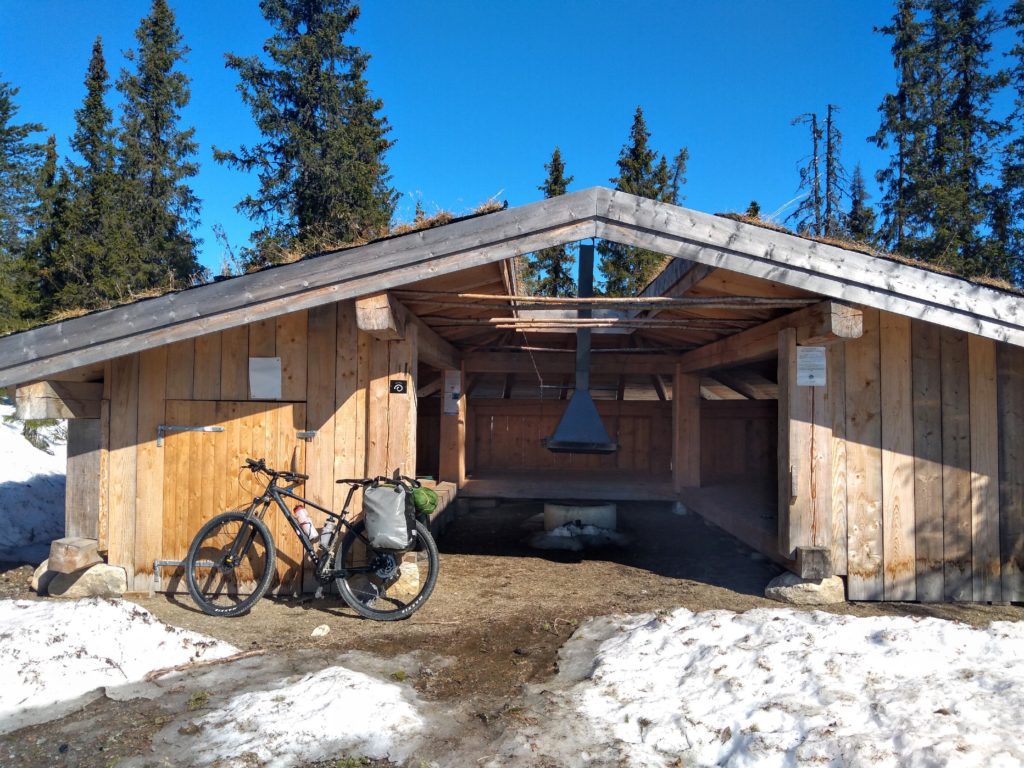
The long rides will help you gain endurance and identify problems with your riding position. If you feel any discomfort or pain, try to adjust the saddle. If you can afford it, consult a bike fitting professional for help.
Don’t ignore the subtle signals your body is giving you: numb wrists, stiff neck, and pain in your knee mean you need to adjust your position or strengthen some muscle groups. If possible, visit a physiotherapist for advice on what weak spots in your body you should work on.
You won’t prepare for the trip only by cycling. It’s crucial to strengthen your core, back and glutes and implement a light stretching routine to prevent injuries, especially if you have a sedentary job. I will write more about it later.
Learn from my mistakes
You don’t need specific training before a bike tour if you’re active and your bike accompanies you every day. Unless, like me, you focus on cycling and slack on stretching and strength training.
Before my first solo bike tour, I considered myself a fit and active girl. For many years, I was a passionate runner doing at least 2-3 training sessions a week and regularly competing in half-marathons.
I was also cycling A LOT. Nearly every weekend, I took off for an 80-100 km ride, often cycling 50 km to my parent’s place instead of taking a bus. Almost every day, regardless of the weather, I commuted to work by bike, 10 km each way.
But I was super lazy with flexibility and strength training. I couldn’t force myself to stretch my body after a long ride.
Accumulated tension in my quads and some imbalance in my body ultimately gave me a pretty bad knee injury three months into my trans-European cycling tour. The pain was so severe I had to give up and fly back home, where an ultrasound revealed a fractured meniscus.
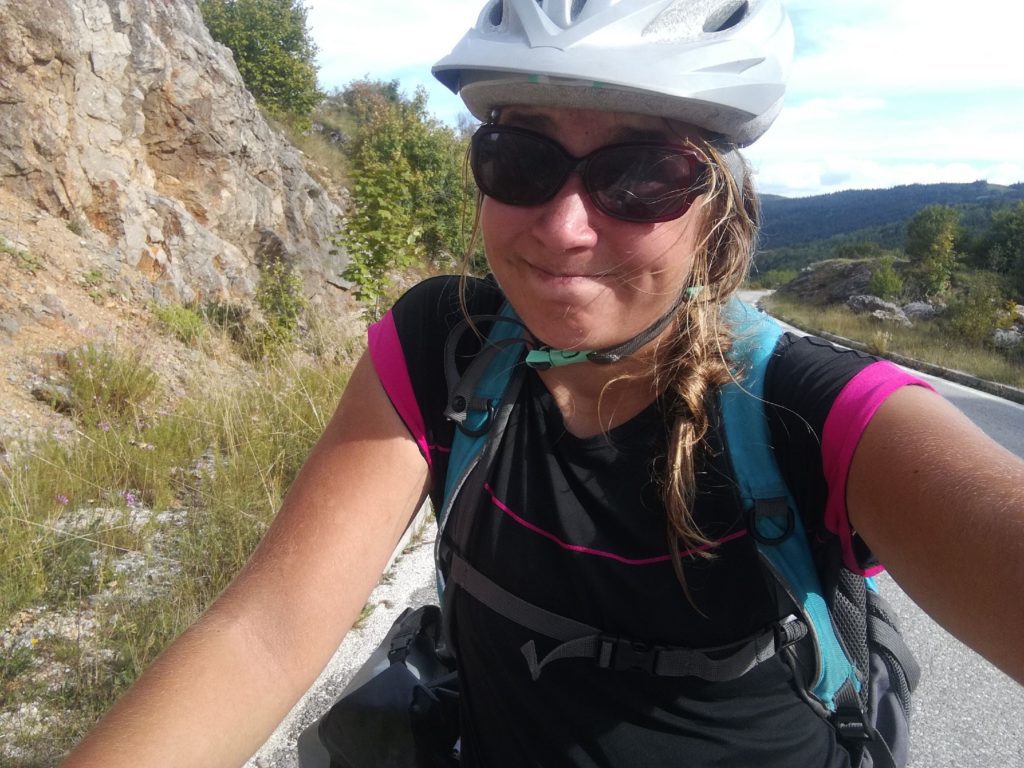
And my case was not exceptional. About 88 % of amateur cyclists suffer from non-traumatic injuries, and overuse knee problems are the number 1 reason people stop cycling and seek medical help.
That’s why now, before embarking on a new cycling trip, I focus more on general strength exercises and stretching instead of building my endurance on a bike.
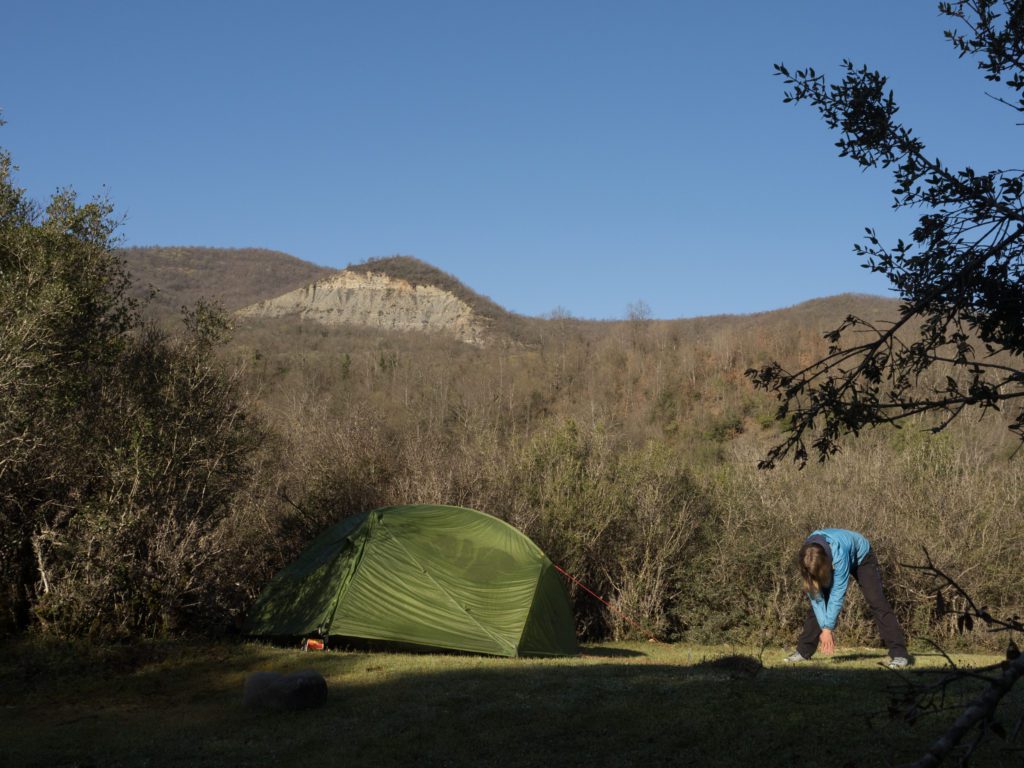
The fundaments of training for a bicycle tour
You don’t need a strict, time-consuming training regimen to prepare for a bicycle tour. The key to success and good shape is a proper balance between cycling, other types of cardio, stretching and strength exercises.
Cycling
To be a good cyclist, you have to cycle. Get your bum used to long hours in the saddle, strengthen your legs and mentally prepare for pedalling through the unknown.
Short rides 2-3 times a week and one longer ride for 2-3 months should give you enough stamina.

Some interval training with faster splits will make you a better cyclist, but you don’t need to focus on it too much. If you’re going to travel through mountainous terrain, try to find as many hills as possible in your neighbourhood. Cycling on the flats is different from biking up a mountain, especially if you carry all your belongings on your luggage rack.
Other types of cardio
It’s not always possible to cycle a lot before your bicycle tour. In this situation, other cardio exercises will help you boost your endurance.
In 2018 and 2019, I lived in the Norwegian mountains, where everything was covered in snow and ice for five months. I tried to cycle on a fat bike a bit, but serious biking was nearly impossible in these circumstances.
Instead, I learned cross-country skiing. It’s one of the best cardiovascular exercises (skiing pros have 5-20% higher lung volume than untrained people). Furthermore, it engages muscles in all regions of your body while having a low impact on the joints.
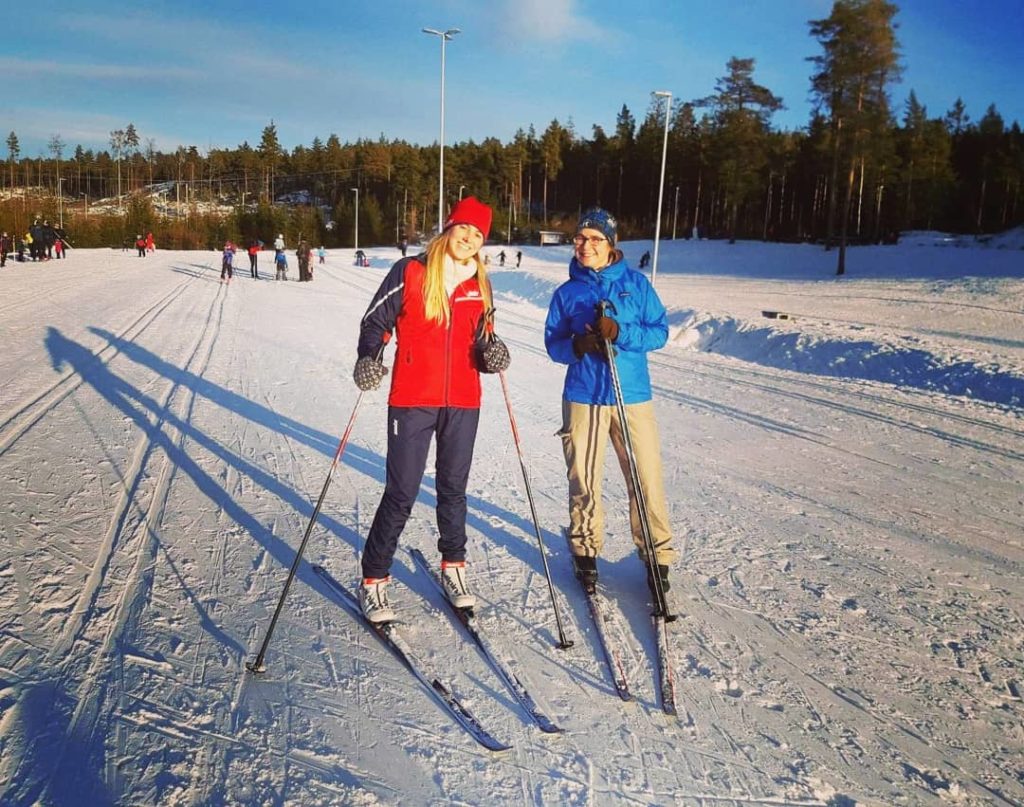
Long-distance running is another good way to gain endurance. If you cannot train outdoors, get some cardio on a treadmill, spinning bike or rowing machine at your local gym.
Stretching
Never underestimate the power of stretching! If you have limited time, cut 10 minutes off your cycling or cardio training and do proper stretching at the end. It will not only relieve the tense muscles after long rides but also prevent injuries.
Focus on your hip flexors, quads and back. You can find some stretching tips for cyclists on YouTube, for example, in this video:
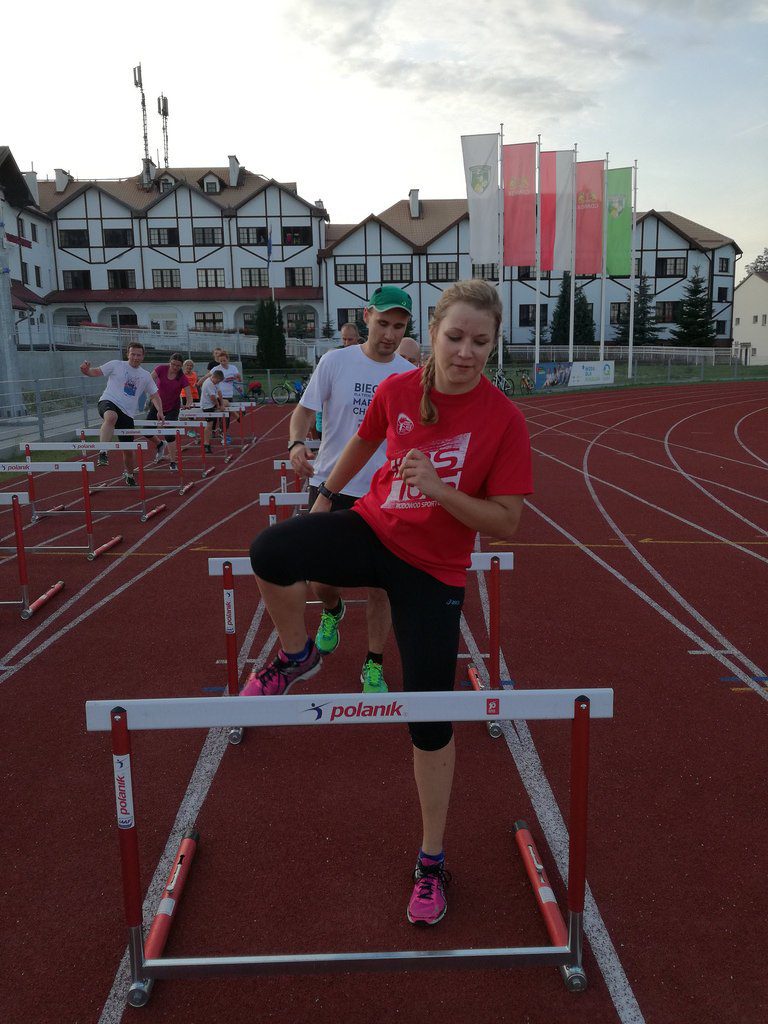
Another good way to prevent injuries is using a foam roller. It can decrease the tension in the deep tissue and significantly improve your range of motion. You can read more about how to use a foam roller tutaj.
Strength training
Building stronger muscles is an essential part of training for a bicycle tour. Lunges, squats and hip thrusts will help you improve stability in your knees.
Don’t only focus on your legs. A strong back, core and arms are at least as relevant for avoiding pain and enjoying a comfortable ride.
I recommend committing at least 15 minutes 3 times a week for strength training.
Check out this video for strength training for cyclists:6 Beginner Strength Training Exercises For Cyclists
I have also used FitnessBlender workouts to help me overcome boredom in my strength training.
Following these tips and making cycling a regular part of your routine will prepare your body and mind for a successful and enjoyable bicycle tour.
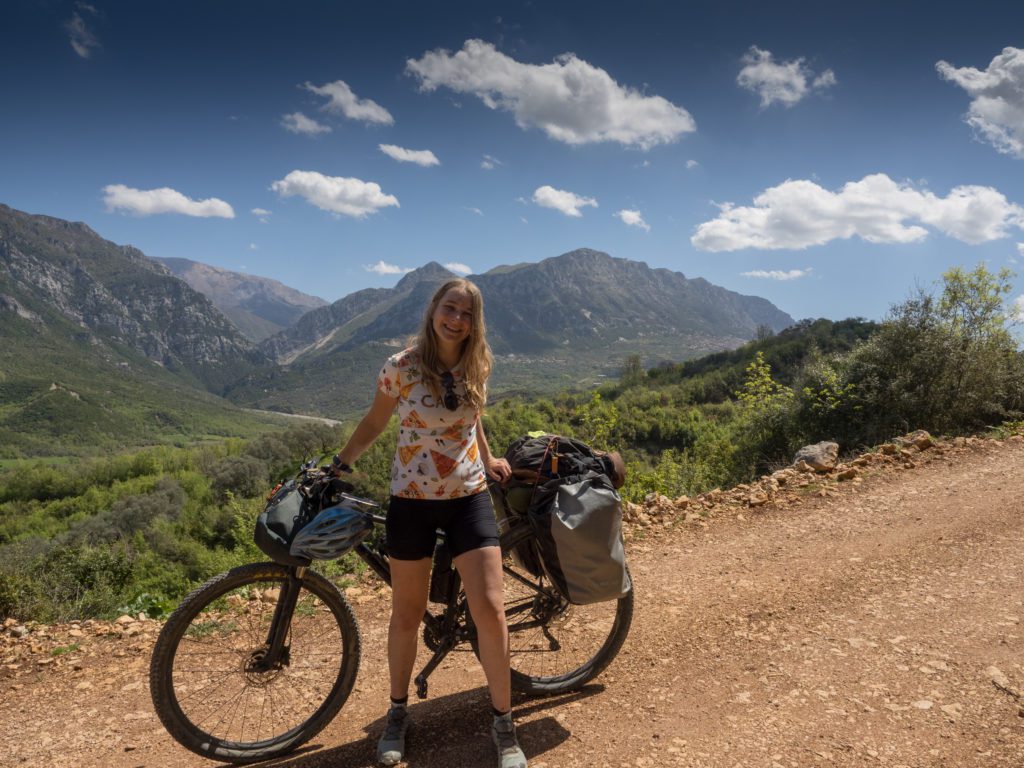
Odnośnik zwrotny: Cycling in Bosnia and Herzegovina - Practical Bike Touring Guide